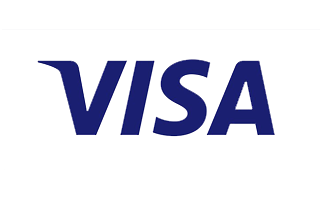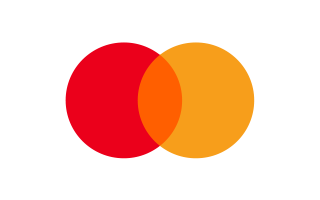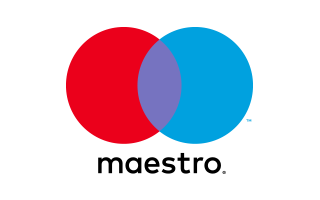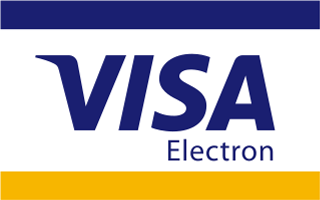The A-Z of Human Braiding Hair: Tips & Techniques
Every hairstyle is a form of self-expression, and when it comes to versatility and natural appearance, nothing beats human braiding hair. This 100% human braiding hair can be found in a variety of textures and styles, from deep wave human braiding hair for that beachy vibe to human curly braiding hair that adds volume and bounce to any look.
More and more hair enthusiasts are choosing human hair braiding hair over synthetic alternatives, as it offers a much more realistic look and feel. Moreover, it's easier to maintain, can be styled just like your natural hair, and blends seamlessly into your own tresses.
But with the vast array of options available, how do you choose the right product? Bulk human hair for braiding, human hair braid extensions, and various textures like afro kinky bulk human hair are just some of the options you'll encounter on your quest for the perfect braiding hair.
In this comprehensive guide, we will explore the world of human braiding hair, diving deep into the types, costs, maintenance tips, and where to buy these high-quality hair products. Let's unravel the mystery of human braiding hair together, transforming tresses one braid at a time.
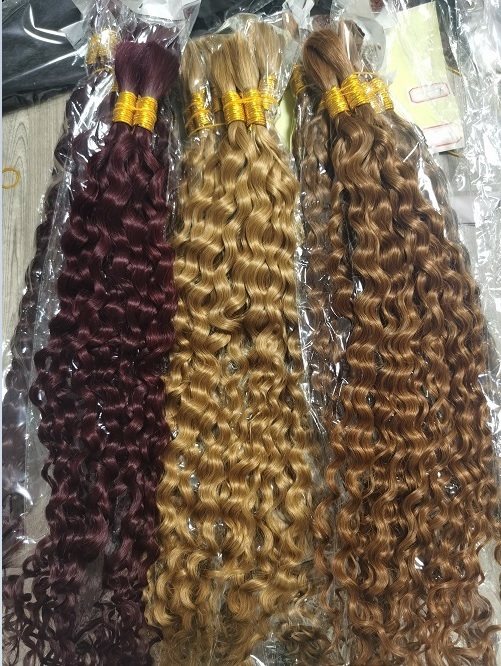
Is There Human Braiding Hair?
Indeed, there is human braiding hair, and it has grown increasingly popular over recent years. The market is brimming with 100% human braiding hair products that cater to a diverse array of hair textures and style preferences. From deep wave human braiding hair to afro kinky bulk human hair, there's something for everyone. Unlike synthetic alternatives, human hair braiding hair comes from actual human donors, which ensures a natural look and feel. Whether you're looking for human curly braiding hair for a bouncy, playful style or bulk human hair for braiding a protective hairstyle, you'll find a myriad of options available. This versatility makes human hair braid extensions a favored choice for individuals seeking to transform their look without compromising on the authenticity of their style.
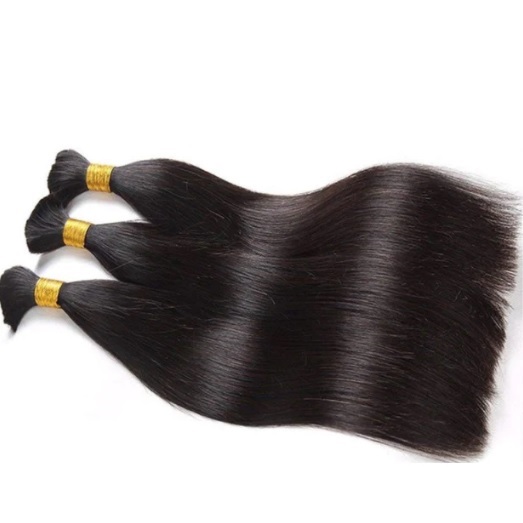
Why is Human Hair Used for Braiding?
Human hair is favored for braiding for several compelling reasons. First and foremost, 100% human braiding hair provides a natural look and feel that is virtually indistinguishable from the person's real hair. This attribute lends an air of authenticity to your braids, whether you're opting for a deep wave human braiding hair look, an afro kinky bulk human hair style, or simply using bulk human hair for braiding.
Moreover, human hair braiding hair is incredibly versatile. It can be dyed, heated, and styled just like your natural hair. Whether you're after straight, curly, or textured styles, human hair braid extensions can be manipulated to achieve your desired look.
Human hair is also more durable than synthetic alternatives. With proper care, human hair braids can last significantly longer, offering better value for money in the long run. This longevity is especially noticeable with types of hair that are designed to retain their curl pattern over time, like human curly braiding hair.
Lastly, human hair is generally more comfortable to wear than synthetic hair, which can sometimes irritate the scalp. While it can be slightly more expensive initially, the investment in human hair for braiding guarantees a superior look, feel, and overall experience.
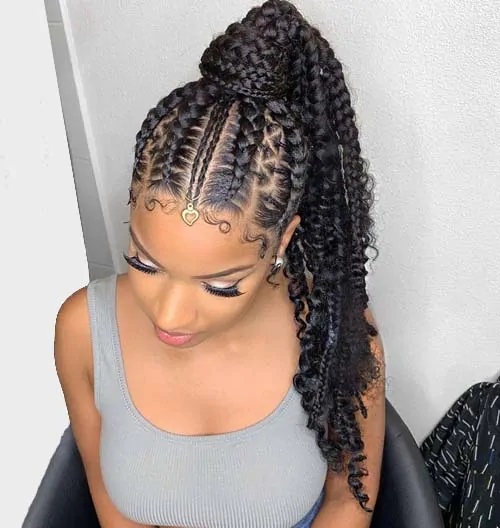
Comparison: Human Braiding Hair vs. Synthetic Hair
When it comes to braiding, the two primary types of hair used are human braiding hair and synthetic hair. Each type comes with its own set of advantages and disadvantages, making the choice largely dependent on personal preference, budget, and desired style.
Human hair braiding hair, such as deep wave human braiding hair or afro kinky bulk human hair, offers a natural look and feel that is nearly indistinguishable from one's real hair. The ability to heat-style, dye, or treat it as you would your own hair adds to its allure. Additionally, it is more durable, offering longevity that can make it cost-effective over time. Notably, human hair is hypoallergenic, making it a better choice for those with sensitive scalps.
On the other hand, synthetic hair is typically cheaper upfront. It comes pre-styled, which means it can maintain its style (curl, wave, straightness) longer than human hair, even through washes. However, synthetic hair cannot be dyed, and heat styling is usually not recommended, which limits style versatility. It also tends to be less natural looking and feeling and may cause discomfort or irritation for those with sensitive scalps.
Therefore, while human hair, whether it be bulk human hair for braiding, human hair braid extensions, or specific types like human curly braiding hair, may have a higher initial cost, its benefits in terms of a natural look, versatility, comfort, and longevity make it a popular choice for many. However, synthetic hair still offers value, especially for those on a budget or those looking for styles that can maintain their shape for longer periods.
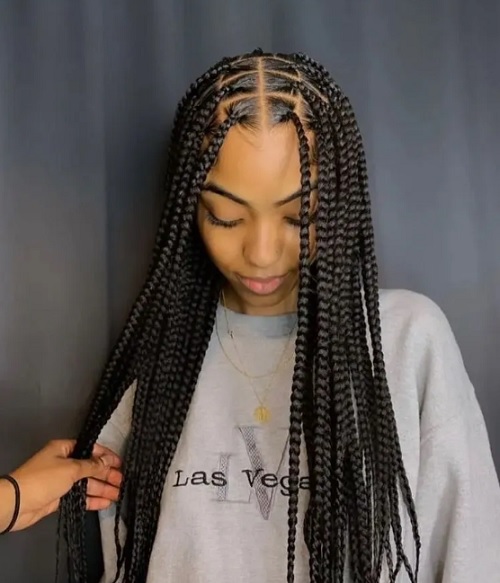
What is the best human hair for braiding?
The best human hair for braiding largely depends on the desired style, budget, and personal preference. Various types of human hair are favored for different styles and textures. Here are a few popular options:
- Brazilian Hair: Popular due to its soft texture, durability, and thickness. Brazilian hair blends well with many hair types and holds styles very well, which is ideal for braids. It is often recommended for its versatility, durability, and thickness. It blends well with many hair types and holds styles excellently, making it ideal for braids.
- Indian Hair: Known for its light, airy feel, and natural luster, Indian hair has a slightly wavy texture, making it a great fit for various braided styles. It's great for those seeking light, airy hair with a natural luster and slight wavy texture.
- Malaysian Hair: Highly sought after for its luxurious luster and shine. It's incredibly silky and has a beautiful, natural wave.
- Peruvian Hair: Thicker, straighter, and has a slightly coarser texture than other hair types. It's also lightweight but provides great volume, making it perfect for braids and a good choice for those who want thicker and fuller braids.
- European Hair: Known for its fine density, European hair is soft, silky, and straight, which makes it easy to style and braid.
- Mongolian Hair: Versatile, durable, and comes in a variety of textures — from straight to curly — making it suitable for various braiding styles.
- Vietnamese Hair: Known for its thickness and fullness, Vietnamese hair is very smooth and shiny. This type of hair is ideal for creating voluminous braids.
- Cambodian Hair: Comes in a variety of textures, from straight to curly, and is known for its heaviness and coarseness, which makes it hold braided styles very well.
- Burmese Hair: Remarkably soft, highly versatile, and offers a natural slight wave pattern. It's known for its incredible volume and thickness, making it an excellent choice for voluminous braids.
Factors Influencing the Cost of Human Braiding Hair
When it comes to pricing for human braiding hair, several key factors can influence the overall cost.
- Quality of Hair: One of the most significant factors affecting the price is the quality of the hair. Virgin, Remy hair – human hair that has not been dyed, bleached, or chemically processed – is typically the highest quality and most expensive.
- Hair Origin: The source of the hair also plays a role in determining its cost. For instance, Brazilian, Peruvian, and European hair are considered luxury hair types and are often priced higher due to their superior quality and texture.
- Length and Volume: The length and volume of the hair also influence the price. Longer and thicker hair extensions typically require more human hair, thus making them more expensive than shorter, thinner options.
- Type of Hair: The specific type of hair can also impact the cost. For instance, specialized textures like deep wave human braiding hair or afro kinky bulk human hair may cost more due to the additional processing required to achieve these textures.
- Brand Reputation: The reputation and standing of the brand selling the hair extensions can also influence the price. Brands known for high-quality hair and ethical sourcing practices often charge more than less reputable sources.
- Processing and Treatment: Lastly, any additional processing or treatment, such as coloring or chemical straightening, can increase the price of the human hair used for braiding.
Please note the cost may vary depending on where you shop, current market conditions, and any sales or promotions the retailer may be offering. It's always a good idea to compare prices from various reputable sources before making a purchase.
Also, keep in mind that while high-quality human hair for braiding can be more costly, the investment often pays off in the form of longevity, natural appearance, and the ability to style and treat the hair as you would your own.
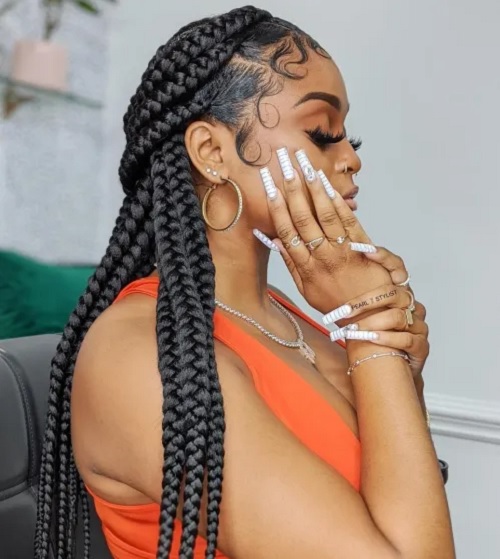
Where to Buy High-Quality Human Braiding Hair?
Finding a reputable source to purchase high-quality human braiding hair is paramount to ensure you receive authentic, long-lasting products. Here are several options to consider:
- Beauty Supply Stores: Often found in many communities, beauty supply stores are a common source for hair extensions. They provide the advantage of seeing and feeling the product in person before purchasing.
- Online Retailers: There are many online retailers that specialize in human hair extensions. Shopping online can provide a larger selection of hair types, lengths, and styles.
- Specialty Hair Shops: These are stores that specifically sell hair extensions and wigs, including human hair for braiding. The staff at these shops are often more knowledgeable about their products and can provide useful advice.
- Direct from Hair Manufacturers: Buying directly from manufacturers can sometimes be a more cost-effective way to purchase high-quality human hair for braiding. Many manufacturers have websites where they sell their products directly to consumers.
One online retailer that stands out for high-quality human braiding hair is Elfin Hair. With a wide variety of hair types, lengths, and styles, Elfin Hair caters to a diverse range of braiding needs.
Elfin Hair Review: Elfin Hair has made a name for itself in the hair industry for its high-quality human hair products. They offer a range of products from 100% human braiding hair to human hair braid extensions. One of their notable features is the variety in textures and types, including bulk human hair for braiding, deep wave human braiding hair, and afro kinky bulk human hair. Customers often commend the longevity and quality of their products, making them a trusted source for human braiding hair. While prices can be on the higher end, their products are often praised for being worth the investment due to their superior quality and durability.
In conclusion, where you choose to buy your human braiding hair will largely depend on your personal preference, budget, and specific hair needs. Always ensure you're buying from a reputable source to get the best quality hair. Checking reviews and ratings can be a helpful way to gauge the quality of a seller's products.
 40%
40%
OFF Sale-
$68.08
$113.69(623) (421)
 40%
40%
OFF Sale-
$77.44
$129.32(416) (313)
 40%
40%
OFF Sale-
$70.42
$117.60(416) (387)
 40%
40%
OFF Sale-
$70.42
$117.60(415) (413)
 40%
40%
OFF Sale-
$70.42
$117.60(415) (370)
 40%
40%
OFF Sale-
$68.08
$113.69(415) (325)
 40%
40%
OFF Sale-
$68.08
$113.69(623) (399)
 40%
40%
OFF Sale-
$68.08
$113.69(623) (367)
How to Maintain and Wash Human Braiding Hair?
Proper maintenance and care are key to prolonging the lifespan and preserving the quality of human braiding hair. Here are some tips and techniques on how to maintain and wash human braiding hair effectively:
Proper Cleaning Techniques
Step 1: Prep the Hair: Before washing, gently remove any tangles from the braids using your fingers or a wide-tooth comb.
Step 2: Wet the Hair: Gradually wet the braids using lukewarm water. Avoid soaking them suddenly, as this can cause tangling.
Step 3: Apply Shampoo: Use a gentle, sulfate-free shampoo to minimize dryness and damage. Apply the shampoo to the scalp and gently massage it in. Then, let the shampoo run down the length of the braids as you rinse to avoid unnecessary manipulation that can lead to frizz and tangles.
Step 4: Condition: Apply a moisturizing conditioner to the braids, focusing mainly on the ends. Leave the conditioner in for a few minutes before rinsing with lukewarm water.
Step 5: Dry: Pat the hair dry gently with a soft towel to remove excess water, and then allow it to air dry completely. Avoid rubbing the hair with the towel as this can cause frizz.
Longevity and Maintenance Tips
- Regular Washing: Depending on your lifestyle and the amount of product you use, washing your human braiding hair every 1-2 weeks can help maintain its health and sheen.
- Moisturize: Keep the hair hydrated by using leave-in conditioners or natural oils like coconut or jojoba oil. This will help keep the hair soft and manageable and prevent dryness and breakage.
- Protect the Hair: At night, cover the hair with a silk or satin bonnet to reduce friction and prevent tangles and breakage. This material can also help to retain the hair’s moisture.
- Limit Heat Styling: Excessive heat can damage human hair, causing it to become dry and brittle. Limit the use of heat styling tools and always use a heat protectant when necessary.
- Professional Maintenance: Depending on the complexity of the braided style, you may want to visit a professional for maintenance services every 4-6 weeks.
Remember, high-quality human hair braiding hair like that from Elfin Hair has the potential to last for a long time with proper care. Consistent maintenance will not only extend the lifespan of your human braiding hair but will also keep it looking as natural and vibrant as possible.
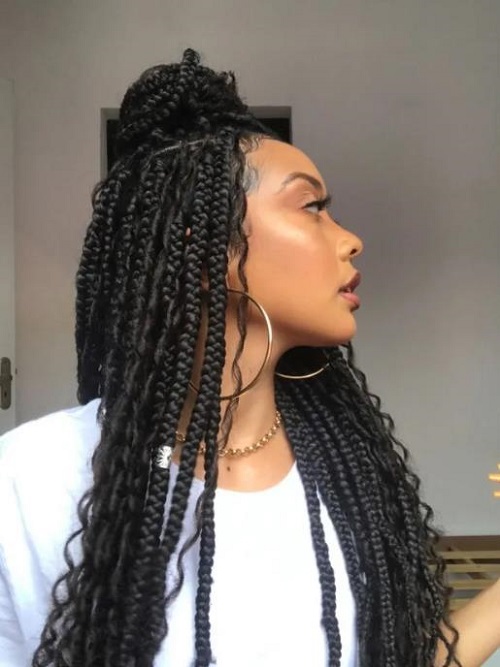
DIY Braiding: Tutorials
Getting braids done at a salon can be a costly affair. But with some practice and patience, you can achieve beautiful braided hairstyles at home. Here are step-by-step guides on how to do Micro Braids and Bohemian Braids with human hair.
How to do Micro Braids with Human Hair?
Step 1: Prep Your Hair: Start by washing, conditioning, and detangling your natural hair. Allow it to dry completely.
Step 2: Section Your Hair: Divide your hair into four sections. This makes it easier to work on one small section at a time.
Step 3: Start Braiding: Take a small subsection of hair from one of the sections. Attach the human hair braiding hair to this subsection. You can use a basic three-strand braiding technique, ensuring that the human hair is incorporated evenly into each of the three strands.
Step 4: Secure the Ends: Continue the braid down to the end of the hair. Secure the end of the braid by dipping it into hot water (be very careful during this step). This helps to seal the braid and prevent it from unraveling.
Step 5: Repeat: Repeat the process on the remaining hair sections. Remember, microbraids take time, so be patient.
How to do Bohemian Braids with Human Hair?
Step 1: Prep Your Hair: Like with micro braids, start by washing, conditioning, and detangling your natural hair.
Step 2: Create a Side Part: For a classic bohemian look, create a deep side part.
Step 3: Start a French Braid: Begin a French braid on the side with more hair. Incorporate the human hair braiding hair into the braid as you go along.
Step 4: Create a Loose and Effortless Look: The key to a Bohemian braid is its effortless look. Loosen the braid a bit by gently tugging on the edges.
Step 5: Secure the Braid: Continue the braid down to the end of the hair and secure it with a hair tie.
Step 6: Add Finishing Touches: For a more boho look, add accessories like flowers or hairpins. A few loose strands around the face can also enhance the casual, bohemian vibe.
Remember, practice makes perfect. The more you practice, the more comfortable and efficient you'll become at braiding your own hair."
Note: This is a simplified tutorial, and achieving these styles might require additional practice or even the assistance of a friend, particularly for complex styles or hard-to-reach areas of the head. Always be cautious when handling hot water or heat tools.
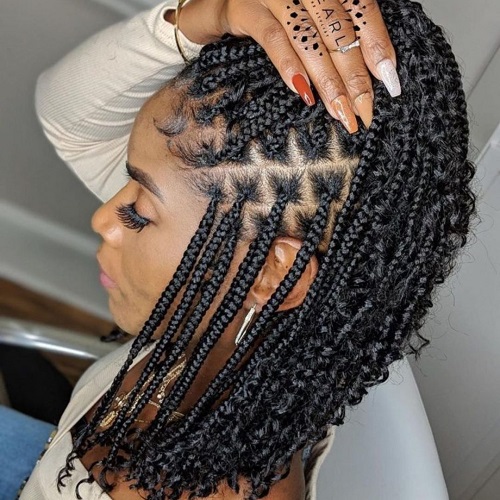
Precautions to Take when Using Human Braiding Hair
Though human braiding hair offers numerous benefits, it's essential to take certain precautions to protect your natural hair and scalp. Here are some key considerations:
- Do a Patch Test: If you're using dyed or chemically processed human braiding hair, do a patch test to ensure you don't have any allergic reaction to the dyes or chemicals. You can do this by attaching a small piece of the hair to your skin using a plaster and leaving it for 24 hours.
- Avoid Overly Tight Braids: Braiding your hair too tightly can lead to traction alopecia, a form of hair loss caused by the pulling force being applied to the hair. Ensure your braids are snug but not causing discomfort or pain.
- Be Gentle While Detangling: Always be gentle when detangling your braids to avoid breakage. Use your fingers or a wide-tooth comb and work your way up from the ends to the roots.
- Maintain Scalp Health: Braids can sometimes cause dryness and itchiness to the scalp. Keep your scalp moisturized and clean, and consider using anti-itch products if necessary.
- Do Not Overuse Heat Styling Tools: While human hair extensions can handle heat better than synthetic ones, they can still be damaged by excessive heat. Limit your use of heat styling tools and always use a heat protectant.
- Rotate Styles: Constantly wearing the same hairstyle can put continuous pressure on certain areas of your scalp, potentially leading to hair thinning or loss. Change up your braid styles to give different areas of your scalp a rest.
- Consult a Professional: If you're new to braiding or have a complicated style in mind, it may be best to consult a professional. Incorrectly installed braids can lead to hair damage.
Remember, the key to successfully using human braiding hair is taking the time to care for it properly and listening to your body. If you experience any discomfort, irritation, or hair loss, it may be best to remove the braids and consult a hair care professional.
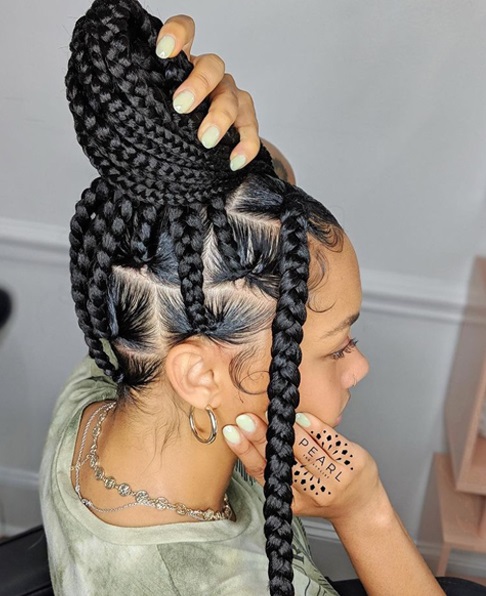
Conclusion
In the end, human braiding hair is a great choice for people who want to try out different hairstyles while keeping their natural hair safe. It's important to buy from trusted sellers like Elfin Hair to ensure you're getting high-quality products.
Choosing the right type of human hair for braiding—like Brazilian, Peruvian, Indian, Malaysian, or Burmese—depends on your hair type and the style you want.
Although human hair is usually more expensive than synthetic, it lasts longer and looks more natural. Also, you can safely use heat-styling tools with it.
You can create beautiful braids like micro braids and bohemian braids at home. But remember to avoid making your braids too tight to prevent hair damage.
Finally, taking good care of your human braiding hair is essential. Regular cleaning and moisturizing, along with gentle detangling, can help your braids look their best for longer.
In short, with the right choice, careful use, and good care, human braiding hair can be an excellent way to add variety to your hairstyles.
Related Posts:
1 Hair Color Vs. 1B Hair Color Vs. 2 Hair Color
Understanding Curly Hair Types: Wavy Hair Vs. Curly Hair
Embrace the Celebrity Style Kim K 2x6 Closure Wigs
Ready To Wear Wigs: Airy Cap Vs. Traditional Dome Cap

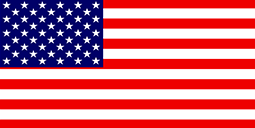 USD
USD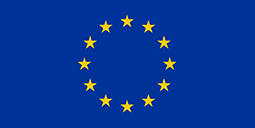 EUR
EUR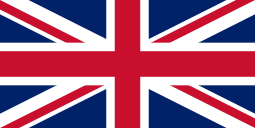 GBP
GBP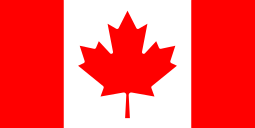 CAD
CAD











